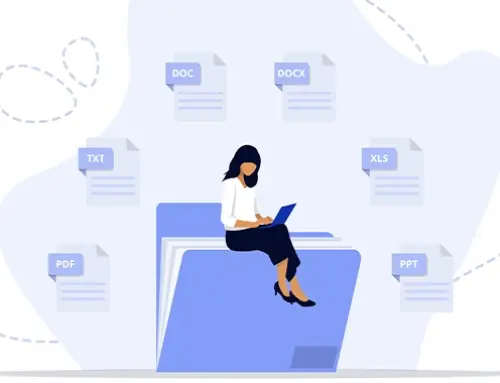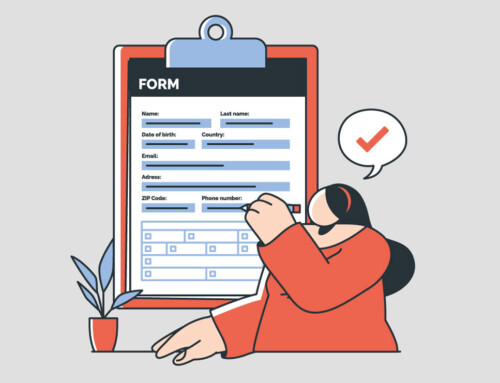Contents
Patents play a pivotal role in protecting intellectual property, granting inventors exclusive rights to their inventions and fostering an environment that encourages innovation. They offer a strategic advantage by allowing inventors to capitalize on their inventions through mechanisms like licensing, selling, or direct commercialization. Understanding the types of patents, the application process, and strategies for enforcement and monetization is crucial for maximizing the benefits derived from a patent.
Understanding Patents
What is a Patent?
A patent is a legal document granted by a government authority that gives an inventor the exclusive right to make, use, sell, and import an invention for a limited period of time, typically 20 years from the filing date of the application. This exclusivity provides a protective barrier against competitors, allowing the inventor to potentially recoup their investment and profit from their innovative work. The patent in return requires the inventor to publicly disclose the details of the invention, contributing to the broader pool of technological knowledge.
Types of Patents
There are three main types of patents that cater to different kinds of inventions:
Utility Patents: These are the most common type of patent and are issued for the invention of a new and useful process, machine, manufacture, or composition of matter, or any new and useful improvement thereof.
Design Patents: These are granted for a new, original, and ornamental design for an article of manufacture. Design patents protect the appearance of the product and not its functional features.
Plant Patents: Issued for the invention or discovery and asexual reproduction of any distinct and new variety of plant, including cultivated sports, mutants, hybrids, and newly found seedlings, other than a tuber-propagated plant or a plant found in an uncultivated state.
The Importance of Patents in Innovation
Patents are essential for fostering innovation as they provide inventors with the motivation and financial means to pursue their creative work. By securing an invention legally, patents prevent others from exploiting the patented technology without consent, thus encouraging inventors and companies to continue investing in research and development. Additionally, the public disclosure required by patents stimulates further innovation and development in the field, as other inventors can build on existing patented technologies (once the patent expires) or design around them to create new inventions. This cycle of innovation driven by patents not only pushes technological boundaries but also fuels economic growth and competitiveness on a global scale.
The Initial Idea: Turning Concept into Reality
Documenting Your Invention
Proper documentation is critical when turning an invention idea into reality. Inventors should keep a detailed inventor’s journal or logbook, signed by a witness, to record every step in the development of the invention, from initial concept to final prototype. This journal should include sketches, diagrams, revisions, and explanations of how the invention works and its potential uses. This careful documentation can serve as legal evidence of the conception date and development process, which can be crucial during the patent application process and in defending the patent’s validity in case of infringement or disputes.
Conducting Preliminary Research
Before moving forward with a patent application, it is essential to conduct thorough preliminary research. This includes searching existing patents in patent databases like the United States Patent and Trademark Office (USPTO) or the European Patent Office (EPO) to ensure your invention is new and not already patented. Additionally, researching the market to understand potential commercial opportunities and competition is vital. This research can help refine the invention, identify potential challenges, and better position the product in the marketplace.
Evaluating the Patentability of Your Idea
Determining whether your invention meets the criteria for patentability is a crucial step. An invention must satisfy three primary conditions: it must be novel (new), non-obvious (not evident to someone with ordinary skills in the field), and useful (it must possess a utilitarian function or be operable). Evaluating patentability may also involve consulting with a patent professional who can provide expert advice on the strength of your patent claim and help navigate the complexities of patent law. Understanding these requirements early can save considerable time and resources and increase the likelihood of securing patent protection.
These steps form the foundational phase of transforming an innovative concept into a protected, marketable invention. Properly documenting the invention, conducting preliminary research, and assessing patentability are not only essential for securing a patent but also critical in establishing a strong foundation for the subsequent development and commercialization of the new product.
The Patent Application Process
Preparing Your Patent Application
Preparing a patent application is a detailed and critical process that involves explaining all aspects of your invention in a clear and precise manner. The application must thoroughly document the invention to ensure that it fully communicates the novelty and utility of the idea. It typically includes an abstract, a detailed description of the invention, one or more claims that define the scope of the patent protection sought, drawings (if necessary to understand the invention), and an oath or declaration. The quality of the application can significantly affect the protection it provides and the ease of defending the patent in the future.
Key Components of a Patent Application
The patent application is composed of several key components:
Abstract: Provides a brief summary of the content and essence of the invention.
Specification: The core of the application, detailing the technical description of the invention, explaining how it works, and how it is to be used. This should be written in a way that allows others skilled in the art to replicate the invention.
Claims: These are perhaps the most critical part of the application, as they define the legal boundaries of the patent protection. Claims must be clear and specific, outlining the scope of the invention and what it intends to protect.
Drawings: Visual representations of the invention that supplement the written description, providing a clear understanding of the invention and its functionality.
Declaration or Oath: A statement by the inventor asserting they are the original inventor of the subject matter detailed in the application.
Common Mistakes to Avoid in Your Application
Many pitfalls can jeopardize the quality and success of a patent application:
Poorly Defined Claims: Overly broad or vague claims can lead to a rejection of the patent application or make the patent difficult to enforce. Similarly, very narrow claims can limit the protection afforded by the patent.
Inadequate Description: Failing to fully and precisely describe the invention and how it works can prevent the granting of the patent. Every aspect of the invention must be disclosed clearly and completely.
Failing to Consider Prior Art: Not adequately researching or citing prior art can lead to claims being rejected for lack of novelty or obviousness.
Procedural Errors: Small mistakes like incorrect formatting, missing documents, or not adhering to specific filing requirements can delay or even derail the patent application process.
By understanding and meticulously preparing each component of the patent application, and avoiding common errors, inventors can enhance their chances of securing robust patent protection. This meticulous preparation not only shields the invention legally but also positions it strongly for potential commercialization and enforcement strategies.
Working with a Patent Attorney
Choosing the Right Patent Attorney
Selecting the right patent attorney is crucial for navigating the complex landscape of intellectual property protection. The ideal attorney should have expertise in your specific area of technology and a thorough understanding of patent law as it applies to your invention. It’s important to choose someone who has a track record of successful patent applications and can provide strategic advice tailored to your business goals. Factors to consider include the attorney’s experience, their familiarity with similar technologies, and their ability to communicate effectively.
How a Patent Attorney Can Help
A skilled patent attorney can provide invaluable assistance throughout the patenting process:
Expert Guidance: They can offer strategic advice on the patentability of your invention, the scope of the claims, and potential international protection strategies.
Drafting and Filing: Attorneys can draft a robust patent application that accurately and comprehensively describes your invention and its claims, maximizing the chance of approval.
Navigating Complex Legal Issues: They help navigate complex legal territories such as prior art searches, infringement concerns, and the specific requirements of different patent offices.
Representation: Patent attorneys represent you in communications and negotiations with patent offices, especially in handling rejections and objections effectively.
Costs and Fees Associated with Patent Attorneys
Hiring a patent attorney involves certain costs and fees which vary based on the complexity of the patent application and the attorney’s expertise. Typical expenses include:
Initial Consultations: Some attorneys charge for the initial meeting where they evaluate your invention and potential patent strategies.
Drafting and Filing Fees: These are the fees for preparing and submitting the patent application. They can range significantly based on the invention’s complexity and the attorney’s rates.
Prosecution Fees: These fees accrue from ongoing work after the initial application, including responding to office actions and making necessary amendments to the application.
Maintenance Fees: Over the life of a patent, maintenance fees need to be paid to keep the patent active. While not directly related to the attorney’s fees, they are part of the overall cost of maintaining a patent.
Investing in a competent patent attorney can significantly enhance the likelihood of a successful patent application, thereby securing a valuable asset for your business. The attorney not only aids in securing the patent but also provides strategic advice for leveraging your intellectual property effectively.
Navigating the Patent Office
Understanding Patent Office Procedures
Navigating the procedures of the patent office is a critical aspect of the patent application process. Every patent office, whether it’s the United States Patent and Trademark Office (USPTO), the European Patent Office (EPO), or any other regional patent authority, operates under a set of rules and procedures designed to evaluate and grant patents. Understanding these procedures is essential for a smooth application process. It involves knowing the timelines for responses, the format and protocols for submitting documents, and the various stages an application must go through, including examination and potential publication. A deep familiarity with these processes can help in preparing an application that aligns with the requirements, thus minimizing the risk of unnecessary delays or rejections.
Responding to Office Actions
An office action is an official communication from the patent office that could raise questions or objections regarding a patent application. These communications are part of the standard review process and can relate to substantive issues like the novelty of the invention or more procedural concerns such as the format of drawings or the wording of claims. Responding to office actions promptly and adequately is crucial. A proper response involves addressing all the concerns raised by the examiner, amending the application if necessary, and presenting arguments or evidence to overcome the objections. This stage often determines whether an application will proceed towards grant or require further revision, making effective communication and strategic responses essential components of patent prosecution.
The Role of Patent Examiners
Patent examiners play a pivotal role in the patent granting process. They are skilled professionals with expertise in specific technical fields, and their primary responsibility is to assess the patentability of inventions based on existing laws and patent claims. Examiners review the application to ensure that the invention is novel, non-obvious, and useful, and they scrutinize the application to make sure it meets all legal and procedural requirements. Understanding the perspective and criteria used by examiners can help inventors or their representatives tailor applications more effectively. Building a good rapport with the examiner, when possible, and understanding their feedback can significantly affect the outcome of the patent application process.
Navigating the patent office efficiently requires a strategic approach, thorough preparation, and often, professional assistance. By understanding and respecting the roles and procedures of the patent office, applicants can enhance their chances of securing patent protection effectively and efficiently. This process not only involves meticulous documentation and response strategies but also a proactive approach to addressing potential challenges highlighted by examiners. With the right knowledge and preparation, navigating through the patent office can be a more predictable and successful endeavor.
International Patent Protection
Why Consider International Patents?
In today’s globalized market, securing patent protection internationally is increasingly important. Companies and inventors looking to expand their market reach into multiple countries must consider the protection of their intellectual property beyond their national borders. International patents deter competitors from using, manufacturing, or selling the patented invention in other countries, which can be crucial for businesses planning a global presence. Moreover, as patent laws are territorial, having a patent in one country does not protect the invention in another, making international patents essential for comprehensive global intellectual property strategy.
Overview of the Patent Cooperation Treaty (PCT)
The Patent Cooperation Treaty (PCT) is a pivotal tool for inventors considering international patent protection. It simplifies the process of filing patents in multiple countries by allowing inventors to submit a single “international” patent application that has the potential to be recognized by over 150 member countries. The PCT process does not grant a patent directly but provides a streamlined pathway to national phase applications in member countries, typically within 30 months from the priority date. This approach saves time and reduces the complexity and cost associated with filing separate applications in each country, providing inventors a strategic advantage in managing their international patent portfolio.
Navigating Patent Laws in Different Countries
Understanding and navigating patent laws in different countries is a complex but necessary part of international patent protection. Each country has its own legal framework and requirements for patenting, which can vary widely. For instance, what might be patentable in one country could be considered non-patentable subject matter in another. Additionally, procedural nuances, such as translation requirements, local representation by a patent attorney, and varying timelines for response, also play critical roles. Companies and individuals must often rely on specialized international IP lawyers to manage these differences effectively. It is crucial for patent seekers to understand these diverse legal landscapes to tailor their strategies accordingly and ensure robust protection of their innovations worldwide.
International patent protection requires a proactive approach, considering both strategic and economic aspects of patent filing. By leveraging mechanisms like the PCT and understanding the intricacies of various national laws, inventors can protect their innovations, maintain competitive advantage, and maximize their market potential globally. This comprehensive protection is vital for those looking to develop a strong presence in the international market, safeguarding their intellectual property while navigating the complexities of multiple jurisdictions. In other words, subjects related to licensing can be considered as an international issue which can bring about many related disputes.
Maintaining and Enforcing Your Patent
Patent Maintenance Fees and Deadlines
Once a patent is granted, maintaining it requires attention to ongoing fees and deadlines which vary by country. These maintenance fees, often referred to as annuities or renewal fees, must be paid at regular intervals to keep the patent in force. Failure to meet these deadlines can result in the patent lapsing, leaving the invention unprotected. This aspect of patent management is crucial as it ensures that the patent remains active and enforceable for its full term, typically up to 20 years. Inventors and companies should set up reliable systems or work with professionals to track and manage these deadlines, ensuring that all necessary payments are made in a timely manner to maintain patent protection.
Strategies for Enforcing Patent Rights
Enforcing patent rights is critical to realizing the full economic potential of an invention. Patent enforcement can involve monitoring the market for potential infringements, issuing cease and desist letters, negotiating settlements, or pursuing litigation. Effective enforcement strategies depend on the strength and clarity of the patent claims and the jurisdictions in which the patent is held. It’s often advantageous to seek preliminary injunctions to stop infringement quickly, which can be essential in industries where technology evolves rapidly. Moreover, the strategy might include licensing agreements as a way to resolve disputes amicably and profit from the patented invention without litigation.
Dealing with Patent Infringement
When patent infringement occurs, it is important to take decisive action. The process usually starts with a thorough investigation to confirm the infringement and assess its impact on the market and the patent holder’s interests. Legal action can involve complex litigation, requiring substantial evidence and expert testimony. Therefore, assembling a skilled legal team is essential for navigating this process. The approach to dealing with infringement may vary based on the nature of the infringement, the jurisdictions involved, and the overall business strategy of the patent owner. Options range from negotiating licensing agreements, which can provide a steady revenue stream, to seeking statutory damages through the courts to deter future infringements.
Maintaining and enforcing a patent are critical aspects of intellectual property management that require careful planning and active involvement. By keeping up with maintenance fees and being prepared to enforce rights through various strategies, patent holders can protect their inventions and maximize the benefits of their intellectual property. Whether through vigilant monitoring, strategic litigation, or licensing, effective management of these elements helps in capitalizing on the innovative work and maintaining a competitive edge in the market.
Licensing and Monetizing Your Patent
Licensing and monetizing a patent are vital steps for deriving value from your intellectual property. These strategies not only allow for generating revenue but also expand the invention’s reach without the patent holder needing to manufacture and market the product themselves.
Patent Licensing Agreements
Patent licensing is a contractual agreement where the patent owner (licensor) grants rights to another party (licensee) to use, manufacture, and sell the invention in exchange for royalties or a lump sum payment. This arrangement enables inventors to benefit from their patents financially while leveraging the licensee’s production, distribution capabilities, and market presence. It’s crucial for these agreements to be carefully drafted, specifying the scope of the license, duration, financial terms, and the rights of each party regarding sublicensing and enforcement against third parties. Successful licensing is predicated on a thorough understanding of the market value of the patent and strategic negotiations to ensure the terms are favorable and protect the interests of the licensor.
Selling Your Patent
Selling a patent outright transfers all ownership rights to the buyer, providing the patent holder with immediate capital but relinquishing future control and earnings potential. This option can be appealing if the inventor prefers a lump-sum payment over managing ongoing licensing arrangements or if continuing to invest in the patent enforcement is not feasible. When considering selling a patent, it’s essential to conduct a comprehensive valuation to determine its market worth and to engage in negotiations with potential buyers to secure the best possible deal. The sale process can benefit significantly from professional advice to navigate valuation, negotiation, and transfer procedures effectively. One of the options to sell a patent is by means of mutual agreements in the form of a contract.
Strategies for Monetizing Your Patent
Apart from licensing and selling, there are other strategies for monetizing a patent. For instance, forming strategic partnerships or joint ventures can leverage a patent for mutual benefit, combining the patent holder’s innovative capabilities with a partner’s resources to bring a product to market. Additionally, patent holders can also explore options like patent pooling, where multiple patent owners share their patents to facilitate the development of complex technologies, or engaging in patent assertion, where revenue is generated by enforcing patent rights against infringers.
Effective licensing and monetization of a patent require a clear understanding of the patent’s potential applications and market demand, as well as a strategic approach to leveraging its value. Whether through licensing agreements, sales, partnerships, or other creative strategies, maximizing the financial return from a patent involves careful planning, negotiation, and management of legal and commercial aspects. By actively engaging in these processes, inventors and companies can ensure they gain the most benefit from their intellectual property.
Unlocking the Power of Patents
Understanding and leveraging the intricacies of the patent system is a fundamental step for inventors and companies to protect their innovative ideas and gain a competitive edge in the market. Patents not only secure exclusive rights but also open avenues for monetizing and expanding the reach of an invention through licensing, sales, and international protection. By mastering the patent application process, collaborating with skilled patent attorneys, and strategically navigating both national and international patent offices, inventors can ensure their intellectual property is robustly protected and optimally utilized.
Moreover, the journey through the patent landscape is enriched by learning from the successes and setbacks of others, as illustrated in various case studies and disputes. These narratives provide invaluable insights and lessons that can help refine patent strategies and avoid common pitfalls. Ultimately, understanding the power of patents transforms them from mere legal protections into significant assets that can drive innovation, foster economic growth, and inspire continued progress across industries.
Ready to transform your innovative ideas into protected, marketable assets? Don’t let the complexities of the patent process hold you back. Whether you’re at the initial stages of documenting your invention, preparing for a patent application, or seeking international protection, now is the time to take the necessary steps to secure your intellectual property. Consider engaging with a specialized patent attorney to navigate this journey effectively and ensure your innovations receive the protection they deserve. Take the first step today towards safeguarding and capitalizing on your creative work. Act now to harness the full potential of your inventions and pave the way for future success and growth in your field.
FAQs
1. What are the different types of patents I can apply for?
There are three main types of patents: utility patents, which cover new and useful processes, machines, articles of manufacture, or compositions of matter; design patents, which protect new, original, and ornamental designs for an article of manufacture; and plant patents, which are granted to anyone who invents or discovers and asexually reproduces any distinct and new variety of plant.
2. How long does a patent last?
The duration of a patent depends on the type of patent granted. Utility and plant patents typically last for 20 years from the date of application, while design patents last for 15 years from the date of grant. These durations can be subject to payment of maintenance fees and vary slightly depending on the country.
3. What is the Patent Cooperation Treaty (PCT)?
The Patent Cooperation Treaty (PCT) is an international treaty administered by the World Intellectual Property Organization (WIPO). It offers inventors and companies an efficient way to seek patent protection simultaneously in multiple countries by filing a single international patent application.
4. Can I patent an idea?
No, ideas alone cannot be patented. To be eligible for a patent, an invention must be fully developed and described in such a manner that someone skilled in the field could replicate or use it. The invention must also be novel, non-obvious, and useful.
Disclaimer: The content provided on this blog is for informational purposes only and does not constitute legal, financial, or professional advice.







